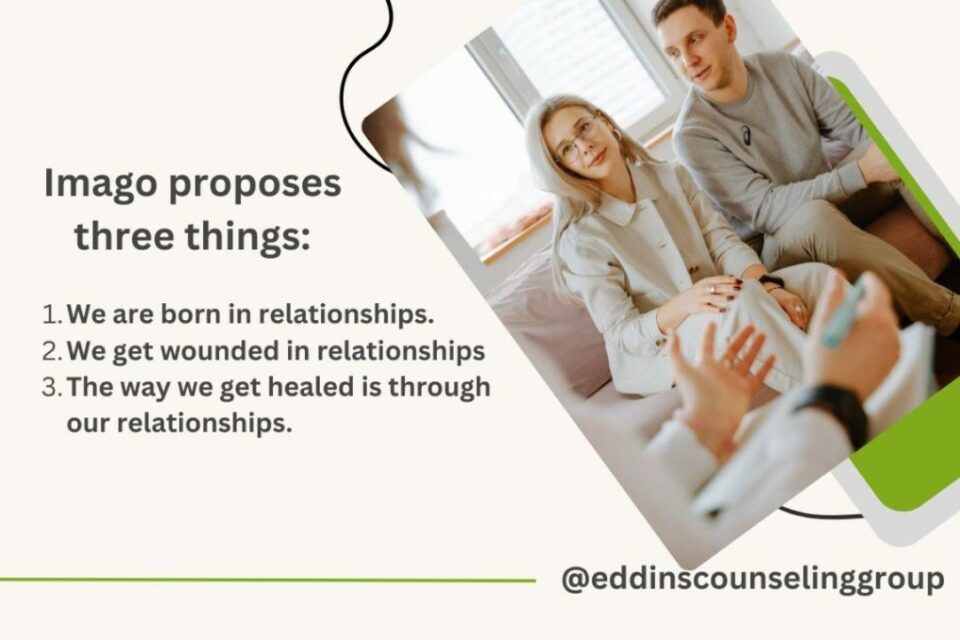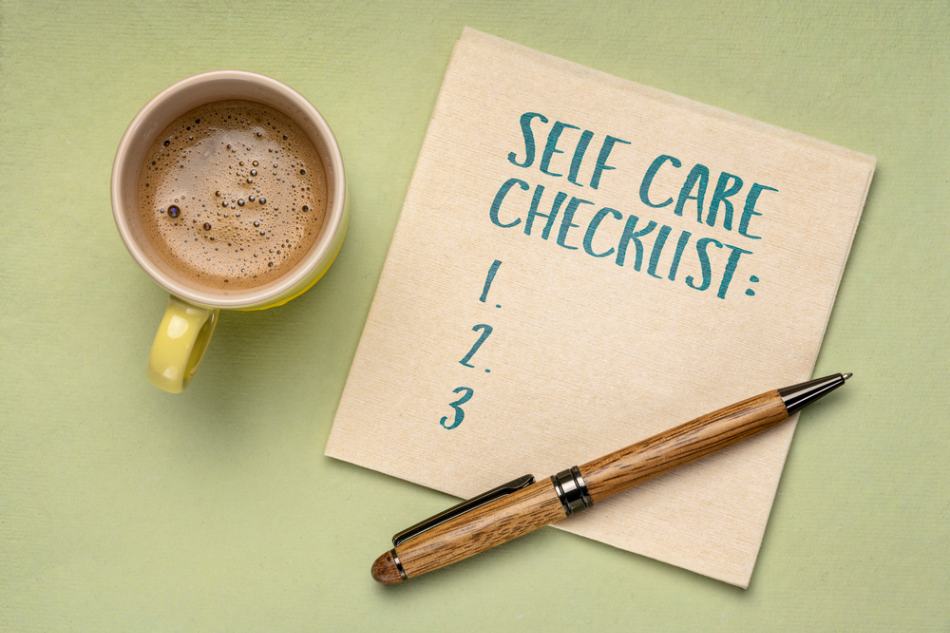March 14, 2024
Webinar: How Couples Can Turn Conflict into Reconnection and Personal Growth
Written by Rachel Eddins
Posted in Relationships, Couples, Marriage, Webinars and with tags: Couples & Relationships, Relationships, conflict, couples, webinar

Reignite the spark in your relationship and turn conflict into growth together.
Join Roddy Young, a licensed therapist specializing in couples therapy, for a free webinar on “How Couples Can Turn Conflict into Reconnection and Personal Growth.”
In this webinar, you’ll learn:
- The key to understanding why we are attracted to our partners
- What sparks conflict in even the strongest relationships
- Powerful tools to turn arguments into opportunities for connection and growth
This webinar is facilitated by Roddy Young, a Licensed Clinical Social Worker and Imago Relationship Therapist.
Watch a replay of the presentation here.
This webinar is facilitated by Roddie Young, a licensed clinical social worker, and a certified Imago relationship therapist. He is going to share his interests in Imago and provide you with some information that will spark you a little bit.
Here is the story about how Roddie Young got into therapy. A number of years ago, Roddie and his partner hit a “speed bump on the freeway of love”, and got to a place where they were having a difficult time. They ended up finding a therapist for them to go to, and he turned out to be an Imago relationship therapist.
They went to him for about 12 sessions. Then they followed up with a weekend retreat with other couples, and it transformed their relationship. It gave them a way to talk to each other that they had never been able to do before, and to handle situations that have been uncomfortable to be able to talk about them, and just improve their relationship overall. It’s made a big difference. That’s what inspired him to end up becoming an Imago relationship therapist because it was so helpful for him and his husband.
What Is Imago Relationship Therapy?
Imago relationship theory and therapy was developed by Harville Hendrix and his wife, Helen LaKelly Hunt. They’re both PhDs, and each one of them had been divorced. Harville Hendrix especially wanted to find out why people end up getting divorced. So he decided to dedicate his life to figuring out how to make marriages work, and what goes wrong with them.
Imago relationship therapy answers three important questions about relationships:
- Why are we attracted to someone?
- What causes the conflict in our relationships?
- How do we turn this conflict into reconnection and personal growth?

How Does Imago Relationship Therapy Work?
Roddy Young uses these same techniques and a lot of the information that he talks about when he is working with individuals, too, because he thinks we are always in a relationship with anybody that we know we’re in a relationship.
When he works with individuals, he asks them how their relationships are with the people that are in their lives, whether they’re a significant other or friends or family (how that works for them). They look at it through the relationship lens, which helps a lot.
The Imago is an image. It’s a collage containing the positive and negative traits of our primary caregivers, which could be our parents or whoever your primary caregivers were. From the time we are born, we get born into our parents’ houses and homes, and they hold us like little babies, and we’re like unprogrammed computers. Everything that’s going on around us is coming into our brains and being stored back in the back of our minds.
The Imago collage contains positive and negative traits.
From the time we’re born, we unconsciously interject those positive and negative traits from our parents into the back of our brains. Our Imago begins with our parents, and then it’s followed by our siblings, the ones closest to us. In the early years, say between the time we’re born to four or five, and then our siblings come in, and they have a more positive effect on us. From our siblings, it would be the extended families, aunts, uncles, grandparents, etc. Then it goes on out.
After that, it goes to all other agents of socialization. That would be where we go to school, the students that we’re with, the teachers we have, whether we go to a church or not, the people in our neighborhoods and our best friends, and things like that. It all comes into this collage, and we begin to see the world through that lens. We’re taught what is acceptable or unacceptable.
As a result of this, we tend to develop certain traits, shutting down other parts of ourselves and hiding them away. So socialization tells us what’s acceptable and not. We take in what the view is acceptable, and we shove down what is not acceptable. It is during this process that we develop what we call “psychological wounds” or “baggage”.
When we grow up, we tend to develop certain traits and shut down parts of ourselves.
And when we grow up and form relationships, our partners, or whoever we’re dating, are going to have an Imago. Theoretically, we all have our Imago rolling around with us. And so we’re attracted to our partners. We refer to that as the Imago match.
We will have many of the same issues and wounds. They’re going to be similar ones. The negative ones, that are planted deepest in our brains, are going to be the ones that have the strongest attraction to them. The good ones are nice to have, but it’s those that we are attracted to. There is something different. We’re going to have similar wounds and different defenses.
The defenses can be either a minimizer or a maximizer.
That’s where the conflict lies. And what we find out, and what the theory points out is that our matches are going to have similar wounds, but they’re going to have different defenses.
Two Stages of Relationships: Unconscious and Conscious

Helen and Harville decided to look at all this stuff, and they came up with the idea that we have two stages of relationships. We have unconscious relationships and conscious relationships. The first stage would be romantic love, and that’s the first unconscious stage.
Like for example, John and Mary, an imaginary couple. John is a little bit on the conservative side. He dresses down a little bit, and he’s neat, buttoned down, get-together. He’s very likable and has a nice sense of humor, but he’s just a little more low-key. Also, he’s very neat at home. Everything has its place. He’s just a real-together guy, but a nice man. And he falls in love with Mary.
Mary is like him, but very different in a lot of ways. Mary is a little bohemian in the way she dresses. She’s got a good sense of humor. She’s a little bit loud, gregarious, outgoing. When they go out, she’s just the life of the party. She draws attention just by the way she looks. She’s got a hearty laugh, and she’s lots of fun.
Romantic Love
He really is taken by her. He’s really attracted to her. He begins to like her, and they each get together, and they dote on what each other says, and their love hormones are raging. That’s what happens to us in the romantic stage, all the stuff that goes on in our brains.
And so they’re terribly attracted to each other. They enjoy each other’s company. John goes and tells his friends: “I just love Mary”. She’s the most exciting exciting woman I’ve ever known. She’s fun, funny. We go out. She’s got wonderful stories. She goes out and tells her friends how much she is attracted to him, and how put together he is. He’s just a wonderful place. She loves going to his apartment. It’s neat and wonderful. He loves going to hers because it’s just a little bit off-setter, a little Bohemian.
And they’re having great fun. Everything is exciting. They find each other charming and wonderful. And they end up getting blinded by their infatuation with any negative things that they might have. So that’s what’s happening with John and Mary.
Power Struggle
Over time, they settled down and John and Mary entered the second unconscious stage. And this takes a little bit of time. We can’t keep that energy up that we have when we’re first dating, where we just want to go out every night. We want to spend every time together, and we want to do this and do that and go out. So, we settle down a little bit, and the hormones begin to ease back a little bit. It goes from John no longer asking Mary out or her suggesting that they go someplace too. It’s just assumed that we’re going to be together. It just changes that thing.
People know that John and Mary are a couple, and some of the excitement goes down. What happens is they turn into the second unconscious stage.
People say that love is blind. What happens is that during the unconscious stage, the blinders come off and they see each other differently.
Now, the parts that emerge unconsciously remind them of the negative parts of their parents, and the things that they once found charming begin to become irritating. Mary really likes John. She loves him a lot, but she thinks he’s just a little bit too buttoned up. She begins to wonder, “Can’t you just unbutton that shirt a little bit? Just loosen up a bit. Let’s go have a little more fun.”
They go out, and Mary’s being her usual self-gregarious self. She comes back and sits down talking to him for a little while. He said: “Can’t you just reel it in a little bit? Sometimes you’re always out there being the center of attention. You don’t need to do that. Just sit here and be with me.” The things that they were first attracted to about by the other begin to be the things that become somewhat irritating.
After the hormone settles down and John and Mary enter the second stage, They enter what we call the power struggle. Some couples remain in this stage after the romantic stage ends. During this second stage, a relationship can change, and it changes in several ways. It can become a parallel relationship. That’s where the energy leaves the relationship. They get settled into it.
Parallel relationships are like railroad tracks. They always travel in the same direction, and go to the same place, but they never touch.
They don’t get far away from each other, but they don’t get close. They’re not emotionally close. They enjoy each other. They’re having some fun. They’re doing stuff, but it’s just predictable. It’s just going to be simple. And some of the original fire has gone.
Or people can go into what we call a volatile relationship, where people get together, argue, carry on a little bit, argue, and then they calm down, begin to apologize and go together.
Then somehow, some of the old baggage comes up that irritates them about the other, and they begin to irritate each other again, and then they have another fight. This becomes a volatile or toxic relationship. We all know people like that, couples who tend to fight, argue, and makeup.
A lot of people just end their relationships and find someone new. We’ve all probably known people who have had similar friends in their lives or experienced these things where you end the relationship and you find someone new. The thing that’s interesting about this is people tend to find the same type every time.
We’ve heard stories about a person who gets abused and goes from one abusive relationship to another, or somebody who is attracted to a person with alcohol use disorder and does the same thing. They’re always attracted to the same type. Again, they’re going to have similar wounds and different defenses. And so they’re going to go out and find somebody new, and they’re going to repeat the same thing over again and over again.
So what are we going to do about this?
This is what Harville and Helen looked at, and they thought: “We figured out what’s going on. What can we do to change relationships and the things that work? What can we do to stop this?” And so they developed the concept of a conscious relationship. The other two were unconscious. It happens from the reactions in the back of our heads.
Our reactions come down here at the reptilian part of our brain, and then we go up here to the limbic center where our emotions are. So we react, we get emotional, and then we can get conscious up here at the top and start thinking through some things. So this is what we’re going to try to do, work in this part of our brain.
Be aware of the unconscious parts that trigger us, and go forward from that. So couples will learn how and why the conflicts arise. That’s the number one thing. If we can figure out what’s causing these things, then we can know how to change them or work around them. How do we move past the conflict? And how do we turn conflicts into opportunities for personal growth and connection?
Couples, as they begin working with a therapist, will understand that what is irritating may have more to do with their own childhood wounds than their partner’s actions.
Let’s say somebody says something to you or your partner would say something to you, and it hits you just the wrong way. You can just feel it. It’s like a little jolt in your stomach. Other people can feel it elsewhere.
When you get triggered, you’ll feel it in your body. You’ll have a bodily response. As soon as you get aware of that, then you have a chance to kick up into the conscious part of your brain. For instance, someone may have an underlying belief of not being good enough. If one partner says or does something that touches on that wound, however unintentional, the other will react much stronger than normally based on the partner’s actions.
For example, if your partner were to say something that feels like criticism, you might react really strongly because you had an older brother who criticized you a lot. You might react strongly to something he said that was really mindless but have a strong reaction to it. Or if you’re not being conscious about it, you can get into a fight over it.
This is the part about staying conscious in a relationship. Couples come to therapy. This is what happens. Sometimes couples show up to therapy and have the same complaint. The number one thing that people complain about is that we don’t know how to communicate. They tend to just fight and argue. They know how to do that, and they get together and they fight.
What happens in a relationship, is that they’ve had similar wounds, but different defenses.
And the defenses could be, that one will be a minimizer, one will be a maximizer. The minimizer tends to pull away. The maximizer comes after. Very emotional coming after this one. This one withdraws both away like that.
We can call them turtles and tigers because, again, the tiger is coming this way and the turtle pulls away, but if you do it enough a turtle will snap. And so they’ll do that a little bit. But they have a usual way of reacting. One will say something, the other withdraws a bit, maybe just shuts down for a little while, and tries to blow it off without talking to their partner.
Imago Dialogue
We’re always communicating. We are never not communicating. The way we walk, the way we move, the way we react to one another, we’re always communicating. So what we want to do is to teach people in Imago how to talk.
Talk is different from communicating.
The number one tool that is used in Imago is called the Imago dialog. A dialog means that one person is going to talk, and the other is going to listen right away. The one that’s talking has to be listened to by the other. It’s hard to listen. If somebody’s talking and giving you a hard time, you want to start building your defense. So you’re not really listening to what’s going on.

In Imago dialog, couples learn to talk to one another and to listen. It’s a very safe way of talking, and you use it for four different situations.
- You want to express your appreciation and love
- You want to be listened to and understood
- You are upset about something and want to discuss it
- You want to discuss a topic that you think might be upsetting
First, you want to express love and affection. Then, you want to be listened to and understood, or you’re upset about something and want to discuss it, or you want to touch on a topic that you think might upsetting.
When people first come to see Roddy, he gives them some education about Imago, but he tells them that they’re going to be doing this dialog. And the number one thing he wants them to do is to do an appreciation. He encourages them to do this every day. They sit down and give an appreciation. And the steps are very simple.
But if you do that, you start putting good things into your relationship. Both parties will be participating in a dialog. What happens is if he’s upset or one of his clients is upset and they have something to talk about, what they need to do is walk up to their partner and say: ”I have something I want to dialog with you about. Is now a good time?”
That sets the tone of what’s going to happen. In other words, what this person is saying is important and needs to be heard. That lets the partner know that this is important to their spouse. The spouse can say: “Yes, now is a good time”. Or the spouse might have just come home from work, tired, and worn out. “Let me go upstairs, change clothes, relax for a few minutes, and then I’ll come down and talk for you.”
You don’t have to talk walk immediately, but the receiver (the one who’s going to be listening), has a duty to get in touch with the person within 24 hours.
So it teaches the person who has something to say, gives them the ability to learn how to hold their feelings in and just hold on to them, feeling like they don’t have to spell them out all at once.
They know that this person will be back and ready to listen to them. And that’s what makes this work so well, is that you know you’re going to be able to be heard. So they’ll be able to sit down and talk about thoughts and feelings or whatever they want to talk about.
What he does, and what he encourages people to do at home, is put two chairs together in the office and have them face each other with a little bit of space between them. You don’t want them to get so touched that their knees are touching. You don’t want them to lean in and hold each other’s hands. So, you want to have a little bit of distance. And what he does is imagine the relationship is that space in between them. It means that the two of them are individuals. They have their own perspective. Their perspective is correct for them. Both of them are 100% right in what you’re doing, thinking, and feeling right now, and so are you.
You’ve got this relationship in between, and what they’re going to do is work on the relationship. Everything they do is about moving, and improving the quality of the relationship. If you’re going to deal with an appreciation, you want to be able to say there’s going to be a sender and there’s going to be a receiver.
The three main steps of the dialog are to mirror, validate, and have empathy.
If you’re going to give an appreciation to your partner, you want to be a little bit specific. Tell them something you appreciate about them. Don’t just say you are nice, or kind. Get very specific about something that they did that was very important to them, such as: ”I appreciate it the other day when you came home and you saw I was having so much trouble with the kids that you said, Let me take care of them and you take a rest for them.”
It’s something specific that the partner did. Then that person will feel loved and cared for by the spouse, and the spouse will see and help his wife out. It’s specific things partners should choose. It’s got to be something that happens sporadically. You begin to start noticing what’s wonderful about your spouse. That’s the good thing about this. When you start wanting to have things to share with them and you focus more on that than you do on the quarals.
The whole point of Imago is to try to get people to be focused on their relationship.
So the sender would say: “Thank you for coming home and taking care of the children. I appreciate it. It made me feel taken care of, and you had felt loved, and I appreciate it.” And so the person that’s listening needs to mirror what is said. “I hear you say that you were really thankful that I came home and offered to take care of the kids, right? Have I got it? I can see why that helped you out so much. It makes sense that you would feel that way and that you were glad. You felt loved and cared for.”
She had also told him that she told him how lucky she was that she had this wonderful man for her husband, and you can validate that. Then you can have empathy. I can see why you are grateful for that, and it makes sense. So you have those three steps to follow.
If they dialog about it, her job is to sit down and listen to what he has to say. “I cooked the dinner and my feelings were hurt that you didn’t show up. And I felt like you didn’t care for me. And the story I’m telling myself is that my efforts don’t matter around.”
She gets to repeat that back to him. “I hear you say that’s the way you feel, and I understand they have empathy.” She may have her reasons, but the first thing she wants to do is validate him. Then after she does that, she can say: “I’m really sorry the traffic was mad.” And he can say: “I hear that now.” But she heard what he was going through.
What couples need to do is hear and feel what’s going on between each other.
So once the sender has shared the person that’s been listening, may or may not want to respond. It just It depends on what’s going on. But there’s a chance for you to play ping-pong a little bit if you need to, if you’re in the deep end of the pool and you need to know how to settle something.
The techniques here, once you get used to them, and people I’ve played this a lot, it sounds awkward, and it does sound awkward. It’s like taking Spanish. It just doesn’t seem right. But once you do it long enough, it works. It’s something that can be drilled into us, and we can always pick it up when we need it.
Six Steps Towards Creating a Conscious Partnership
The Imago dialog is what we use throughout all of our time with clients and want everybody to get used to it that’s working with it. Because in Imago, there are six steps that we use to create a conscious relationship.
-
Recommitting
Whether it is for three or two months. Or just a month. Therapy, it’s best to commit to 12 sessions, but you need the time to go through it. So you need to commit to the relationship. You need to commit to the therapy, which means that couples need to also commit to using the Imago dialog in everything that we suggest that they do.
-
Removing Negativity
Partners need to do is to remove negativity. And that’s from the very beginning. From the time they first come into therapy and sit together across from each other and visualize their relationship. And they should take a zero negativity pledge, and they write that down, and have a 30-day thing to check off if they do it. And negativity means you can’t roll your eyes, snare, yell, swear, so basically do anything negative. You just got to get that out of there.
That doesn’t mean you can’t disagree. You can sit down, do the dialog, and disagree about things, but you have to do it in a healthy way, not a negative way. You start screaming at one another, you have to write it down on that little calendar, and then make a pledge, go on from there, dialog through that as you need to move forward, but to get the negativity out of the relationship. Eliminate swearing. Don’t cuss at each other.
-
Revising:
The next thing they need to do is to revise their relationship. And that’s where people sit down and take some time and write down what they would have, what their perfect relationship or ideal relationship would look like. Maybe 10 to 12 things. For example, spending time together in the morning before work. Or a certain time where they spend a certain time on weekends. Having friends together and friends separately. Having people over. Or, having children, whatever it might be. You write these things down. Each of you go separately and write 10 to 12 things down. Then you get together and compare them.
The ones that match up, you just put a check by them. That’s good. The ones that don’t match up, you can talk about them and decide if that’s something either one of you would want. Or you can say: “Let’s put this one back for something we may look at later. But for right now, let’s work on the positive ones, and then the ones that we agree on, work on that and see if the others will come back in at a later time.” That’s what you want to do plan your relationship instead of just assuming it will happen. A relationship takes work. It always takes work, and it takes effort to do it. So you want to not just let it happen helter-skelter.
-
Reimaging
The other thing is reimaging our partner. You know that partners bring their baggage and childhood wounds into the relationship and that they are triggered by that at times, and their behavior is not healthy. They may yell and do all that stuff. If we can see our partner as a wounded child, it helps. For example, having a picture on your phone of your partner as a child.
Every now and then you realize that you’re both wounded children. You’ve got issues that you carry with you and can be triggered by other people, and just need to be aware of it and to have more empathy for yourself and to have more empathy for your partner. If we can see that, we begin to know each other at a deeper level. Talk a little bit about what your childhood was like, the things that bothered you, the things that went on in your life.
We began to see each other as a child. When we can view our partner as a child, and they come in, and they’re acting out sometimes, and they’re acting like little children, and misbehaving, and yelling, and doing all that, we can think of them. If they start yelling and they’re really upset about something, we can understand that it’s a wounded child inside there that’s having that reaction. So we can have some empathy and some tolerance, and we can talk to them later and say: “I have something I’d like to talk to you about when you came in and you were really angry. Let’s talk about this thing.” So seeing our partner as a child helps a lot.
-
Restructuring
We want to restructure things. We want to transform a frustration that we’re having into a behavior change. Since we all have frustrations and childhood needs, our frustrations are childhood needs and wounds in disguise. This is something that we may need, but we show it in a different way.
For example, one of the partners needs a little more hugging, a little more attention, a little more physical stuff, and needs you to come over and sit down next to them for a little while. And your partner doesn’t really like to do that. It’s just not who your partner is.
So what the one does is try to stretch and consciously give my partner the hugs that they want. So you stretch to meet that need, which helps heal that childhood wound. And both of you come together and you’re right over the relationship. You’ve reached out to make a relationship better. So we learn to stretch and view something that’s a miss in the house and figure out what’s really going on and see how we can fix that.
-
Re-romanticizing:
The last one we try to do is re-romanticize the relationship. In unconscious relationships, the first one was the romantic. Well, that falls away. All that goes away, and it comes to the power struggle, and then we get to this other thing. Well, sometimes we want the romance back, but this time, instead of letting it happen unconsciously, we do it consciously. So you consciously decide to put some romance back in your relationship.
And each couple gets a chance to decide how that works. Whether it is a date night with a show or getting your partner their favorite flowers. And romance can be anything from emotional and physical intimacy, walking together while walking the dogs, being together, walking through the park, whatever it might be. It’s just whatever you see as romantic and things that draw you together.
The essence of a conscious partnership is: Number one, you need to accept that your partner is not you and has a different perspective. You may love broccoli. He may hate broccoli. You get over these things, but everybody has a different perspective. You need to be an advocate for your partner’s separate reality and potential Make our relationship a sacred space by removing all negativity. Always honor your partner’s boundaries and practice Imago dialog until it becomes second nature, and you can interact spontaneously with me. This is a gigantic thing and pulled down into the smallest thing I could do to try to get you to understand this.
Does Imago work for an employer-employee relationship?
Yes, it can. It’s made for romantic things, but the techniques can be used for an employer-employee relationship. If you’re having trouble communicating back and forth, if one person says something to you and you don’t want to react, you can just say: “I hear you say that you’re upset with the way I’m doing my work. Is that correct? Have I got it?” You can do that back and forth. Yes, you can do the dialog to where you’re able to hear what your employer and employee might say without reacting to one another. It works with any conversation like that. It’s very easy to work.
Does Imago work for a parent-child relationship?
Yes, it does work with the parent-child relationship. A parent-child relationship has a romantic phase. It depends on the age of the child. If you’ve got a 13-year-old you’re trying to argue with, that’s going to be a little bit harder to get them to play into it, but at least you can let them know you’re hearing what they have to say. There are parts of it that you could use.
When you first have a child, you’re going to be enamored with them and love them, and they’re fabulous and all that. But I’m sure when they become toddlers and you’re running with them, it will be a harder thing to do. Romantic is where you love and care for somebody. It’s going to be different than, of course, a coupleship. But according to Imago, if you have negative things, they stick down there the deepest because they hurt you the most.
In Imago, in a relationship, the original attraction has to do with the negative, but you have the positive things, too. Because remember, in Imago, you have the positive and the negative of the parents. So you’re also attracted to people because of the positive things, too. It’s both.
Can feelings about your partner be expressed in an email?
The whole part of Imago is for you to be able to sit across from each other. Emailing is an interesting way to communicate. To hear him, you need to be able to mirror back what he has to say. If he’s talking to you and if he’s talking too fast, one thing you can say is: “What you say is very important to me, but you’re saying it too fast. Would you slow down so I can get everything? I love you, and it’s important that I hear what you have to say.”
And ask more: “Can you tell me more about that? I hear you’re really upset about something. Tell me more about that.” Just keep pulling things out of him, and that’s the way you can hear what he has to say, what he wants to say to you. You may not like what he has to say, but you’re really wanting to hear what he has to say. And after he communicates it, perhaps you’ll be able to tell him succinctly what’s going on with you.
Imago would help you as a couple. It can teach you how to talk to one another. You can always tell him that you want to learn how to improve your communication with him and ask him if he would come to a couple of sessions with you about learning how to communicate.
Contact Us
If you have questions and would like to talk more about Imago or just have questions, just call Eddins Counseling Group at 832-559-2622 and get a 15-minute session via Zoom. We can talk and answer some of your questions and you can get an idea if we would work for you or just answer some questions that you need to get answered.
Grounding & Self Soothing
Get instant access to your free ebook.






















